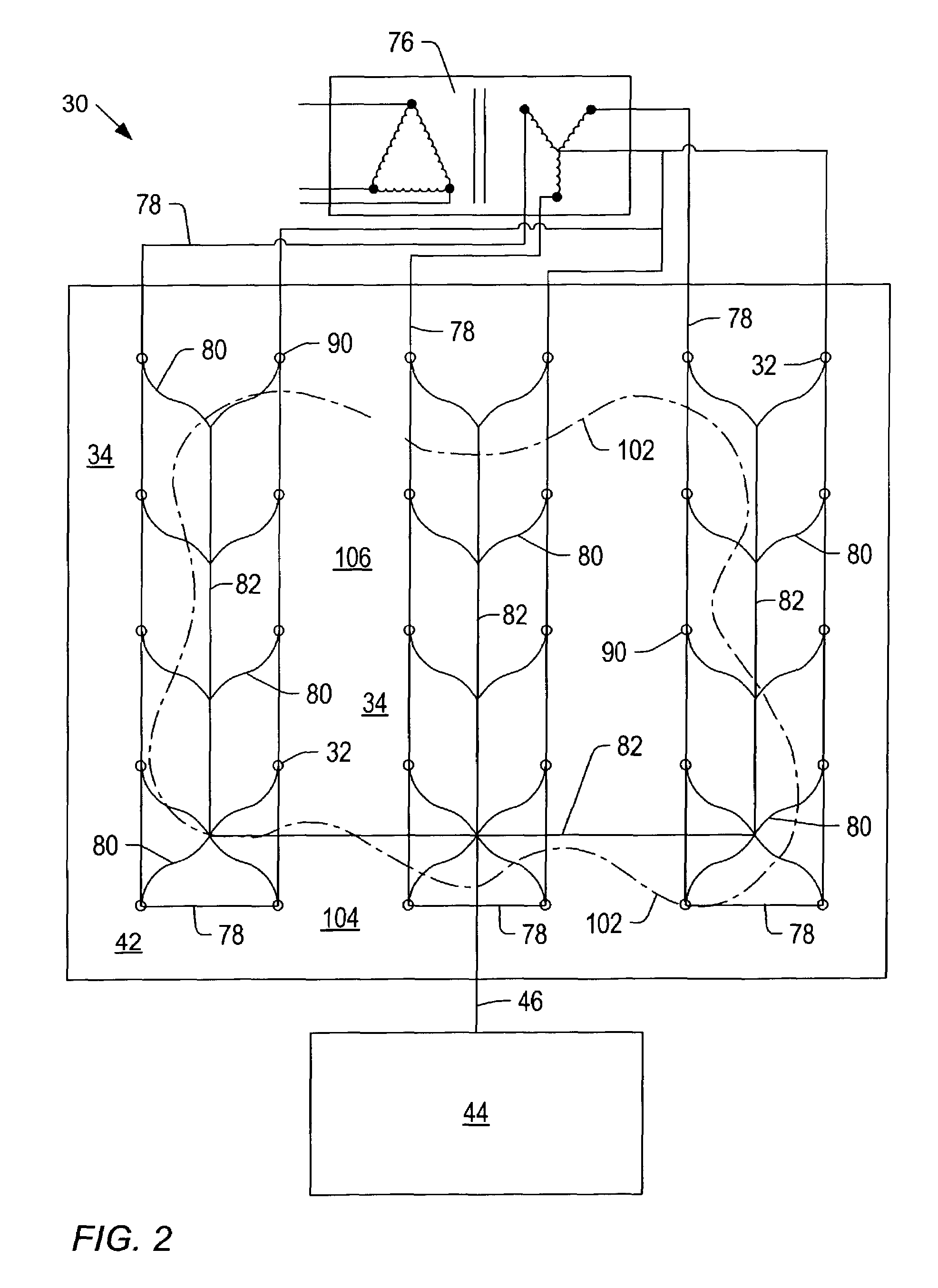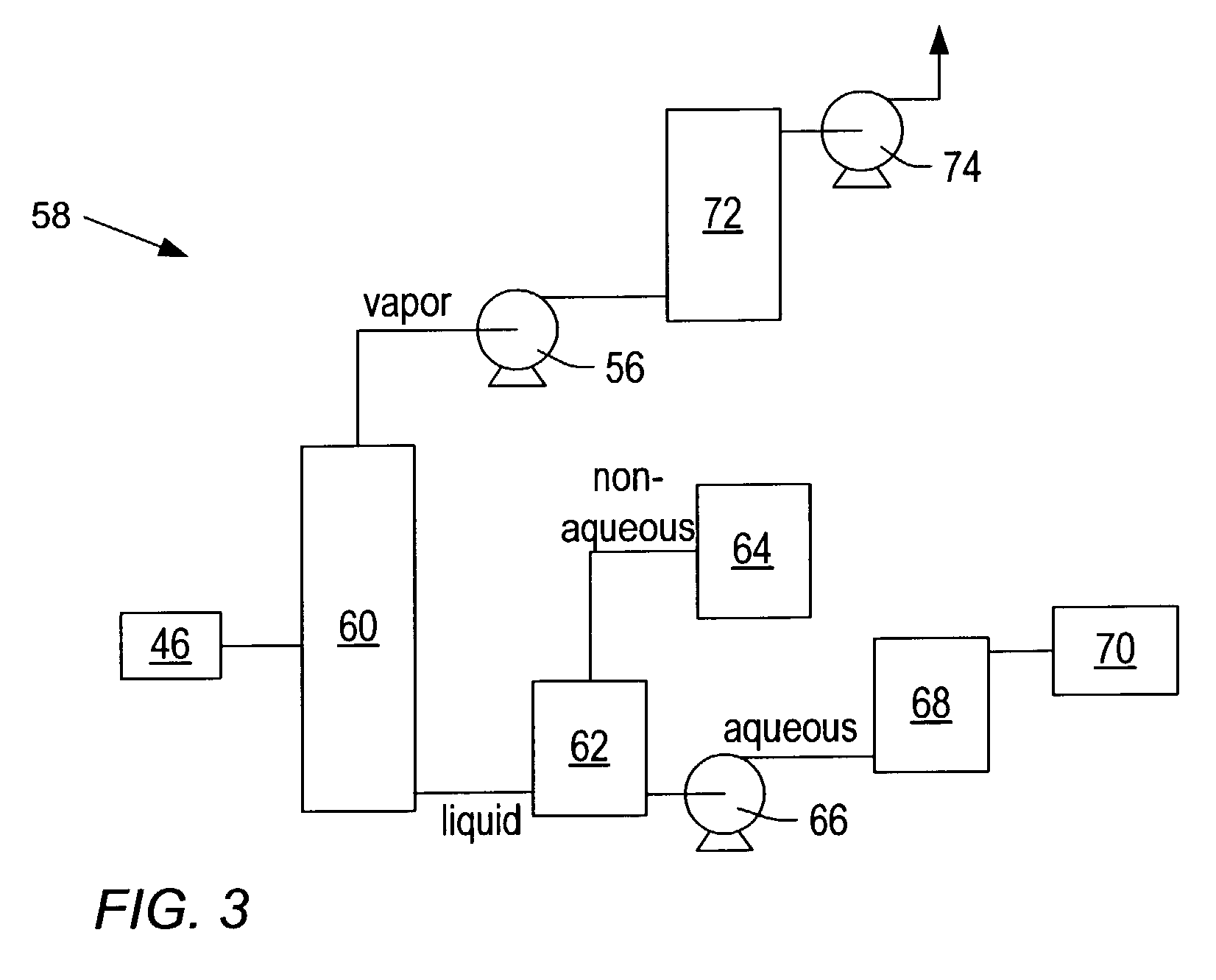Soil remediation using heated vapors
a technology of soil remediation and heated vapor, which is applied in the field of soil remediation systems and methods, can solve the problems of soil contamination, soil contamination, chemical, biological and/or radioactive compounds, etc., and achieve the effects of reducing heating requirements, reducing energy consumption of soil remediation, and reducing time consumption
- Summary
- Abstract
- Description
- Claims
- Application Information
AI Technical Summary
Benefits of technology
Problems solved by technology
Method used
Image
Examples
Embodiment Construction
[0054]A soil remediation system may remove or reduce contaminants within a selected soil region. FIGS. 1 and 2 show schematic representations of embodiments of soil remediation systems 30. Soil remediation system 30 depicted in FIG. 1 may include one or more extraction wells 32 within soil 34. Soil remediation system 30 may optionally include one or more heat injection wells 36, one or more fluid injection wells 38, and one or more test wells 40. Fluid injection wells 38 and / or test wells 40 may be located inside or outside of a pattern of extraction wells 32 and heat injection wells 36. Extraction wells 32, heat injection wells 36, fluid injection wells 38, and / or test wells 40 may include well casings. Portions of the well casings may be perforated to allow fluid to pass into or out of the well casings. Alternatively, extraction wells 32, heat injection wells 36, fluid injection wells 38, and / or test wells 40 may include a cased portion and an uncased portion. The uncased portion ...
PUM
| Property | Measurement | Unit |
|---|---|---|
| depth | aaaaa | aaaaa |
| temperatures | aaaaa | aaaaa |
| temperatures | aaaaa | aaaaa |
Abstract
Description
Claims
Application Information
 Login to View More
Login to View More - R&D
- Intellectual Property
- Life Sciences
- Materials
- Tech Scout
- Unparalleled Data Quality
- Higher Quality Content
- 60% Fewer Hallucinations
Browse by: Latest US Patents, China's latest patents, Technical Efficacy Thesaurus, Application Domain, Technology Topic, Popular Technical Reports.
© 2025 PatSnap. All rights reserved.Legal|Privacy policy|Modern Slavery Act Transparency Statement|Sitemap|About US| Contact US: help@patsnap.com



